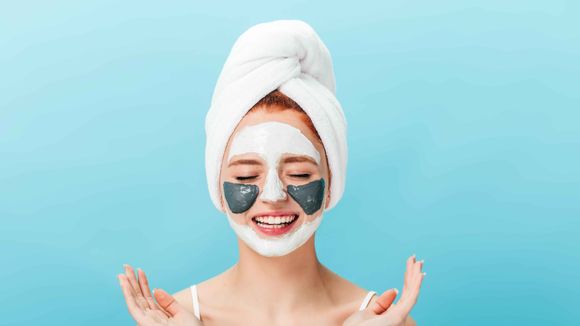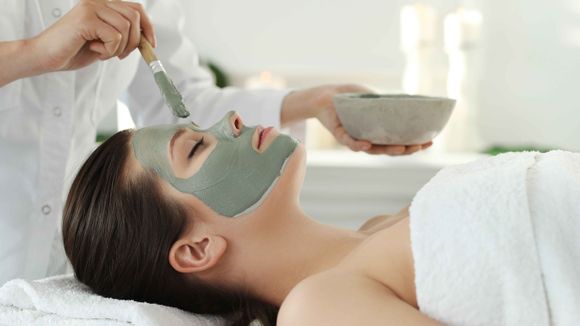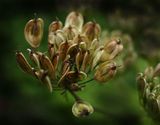Advantages of clay for skin and hair
Huma balances oily skin
Clay has strong absorbent properties. When used in a skin mask, the clay can remove excess sebum and help balance oil. This effect will be stronger or softer depending on the type of clay you use.
Red clay is one of the most drying clay. It would be a good choice if you have very oily skin, but not if you have dry skin. White clay, on the other hand, is much softer and can be used for both oily and dry skin. This type of clay is the most delicate and suitable for all skin types, working in depth for skin cleansing and detoxification.
Clay unclogs pores and can help with acne
The way the clay is applied helps to unclog pores by extracting dirt, toxins and excess sebum. This can help prevent blackheads and white dots, as well as mild forms of acne. Applying a mask made with clay and warm water can help the pores open even more so that the clay works even better.
Clay soothes itching of the skin and rashes
Clay has cleansing properties that can remove dirt from the pores of your skin. This reduces the risk of redness or persistent itching. The clay is gentle for use on the skin and cleanses it without disrupting its barrier functions, stimulates cell renewal and provides a more youthful appearance of the skin.
Clay cleanses & detoxifies skin
Clay can "pull" dirt and toxins from your skin. It is most often used as a face mask, the most suitable for this purpose is the natural white clay. It also has deodorizing properties, which is another advantage of it, besides the gentle action.
Clay as a natural shampoo
In addition to skin care, you can also use some types of clay as a natural shampoo to remove oil, dirt and other contaminants from the scalp. Clay also enhances the blood circulation of your scalp, which leads to the growth of stronger hair follicles.
What are the different types of clay (healing clay)
There are no two exactly identical clays, because each of them has unique properties that come from where they originated and from the weathering process that formed them. However, there are several basic types, and now we will review their distinctive properties.
Bentonit clay
Bentonite is one of the most popular and well-known types of clay. There are numerous applications both inside and outside your body and is often the preferred clay for detoxification purposes.
Bentonitic clay is made of volcanic ash. The name comes from the town of Fort Benton, Montana, where one of the largest deposits of this type of clay is located.
Green clay
Green clay (sometimes called French green clay) is rich in plant material as well as volcanic matter. Decomposed plant material is responsible for the soft green color of clay. This type of clay easily cleanses, absorbs and restores the skin, and is suitable for normal and combined to oily skin type prone to acne.
You can use green clay both internally and externally. It is suitable for face mask and contains minerals such as zinc, magnesium, calcium, selenium, potassium, copper and iron.
Face mask with green clay
Ingredients:
- 1 tbsp green clay
- 1 tbsp green tea
- 1 tbsp avocado
- 2-3 tbsp water
All ingredients are mixed until they form homogeneous mixture. You can apply it to clean skin, wait for 10 minutes, then wash off only with lukewarm water.
White clay (Kaolin)
White clay (also called kaolin clay) is very fine and light clay, suitable for all cosmetic purposes. It is softer and less drying than other types such as bentonitis or red clay and is the best choice if you have sensitive skin. You can use it for exfoliating, cleaning, making a face mask, etc. White clay is not suitable for internal usage.
Kaolin clay as a cleaning agent
If you want to use kaolin clay as a cleansing agent, you can get a ready-made product based on kaolin clay. You can also use a powdered clay shape to make a homemade cleaning agent:
- Take warm water in your palms.
- Mix a pinch of kaolin clay with the water.
- Rub it gently on your face.
- Wash and dry your face.
Kaolin clay as a mask
When making a mask with kaolin clay, there are some important steps to follow:
- Clean your face properly before applying the mask.
- Keep the brush (applicator) clean before and after applying the mask. This will ensure that your skin does not get dirty.
- Apply the mask to the face and neck to get an even skin tone on both.
- The mask of kaolin clay should remain on your face for at least 9-10 minutes.
- Hydrate your skin after washing the mask. That's all!
Red clay and Rhassoul clay (Moroccan clay)
Rhassoul clay and red clay have similar properties. Rhassoul clay is extracted from the depths of the Atlas Mountains, northeast of Morocco.
Both types of clay have powerful properties that promote detoxification and are more drying out than other types of clay. Each of them is high in minerals, as rhassoul clay has a high content of silica. Red clay contains iron, silica and dolomite.
You can use both types on skin and hair, as they are especially useful for oily skin.









